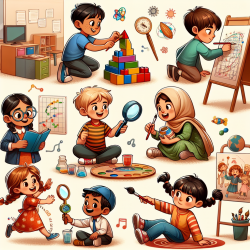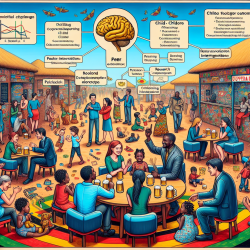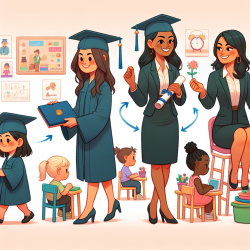In the realm of child development and education, understanding the interplay between play, attention, and learning is crucial for optimizing classroom outcomes. A recent research article titled "Play, attention, and learning: How do play and timing shape the development of attention and influence classroom learning?" sheds light on these connections. This blog will explore the key findings of this research and offer actionable insights for practitioners aiming to enhance their skills and encourage further exploration.
The Importance of Play in Cognitive Development
The research highlights that play is not merely a leisure activity but a critical component in the development of cognitive functions such as attention. Play activities, particularly those involving anticipatory timing, like clapping games or rhythmic actions, help form neural connections that facilitate the synchronization of temporal and spatial expectancy with sensory information. This synchronization is essential for attention and learning in formal educational settings.
Key Findings from the Research
- Predictive Timing and Attention: Engaging in play activities that require anticipatory timing can enhance a child's ability to predict sensory events, thereby improving attention and learning capabilities.
- Role of Repetition: Repetitive play activities, such as throwing stones into a puddle or playing rhythmic games, help children develop accurate predictions about the external world, which is crucial for attention and learning.
- Impact of Locomotor Play: Activities that involve movement, such as walking or object play, provide varied sensory inputs that are vital for cognitive development.
Implementing Research Findings in the Classroom
Practitioners can leverage these findings to create more effective learning environments. Here are some strategies:
- Incorporate Rhythmic Activities: Integrate activities like clapping games, rhythmic chanting, and musical exercises to help children develop better anticipatory timing and attention.
- Encourage Repetitive Play: Allow children to engage in repetitive play activities that involve prediction and timing, such as throwing and catching games or building with blocks.
- Promote Movement-Based Learning: Design classroom activities that involve physical movement, which can provide varied sensory inputs and enhance cognitive development.
Encouraging Further Research
While the current research provides valuable insights, there is still much to explore. Practitioners are encouraged to engage in further research to better understand the nuanced relationships between different types of play, attention, and learning outcomes. This could involve conducting classroom-based studies or collaborating with researchers to develop new interventions.
To read the original research paper, please follow this link: Play, attention, and learning: How do play and timing shape the development of attention and influence classroom learning?










